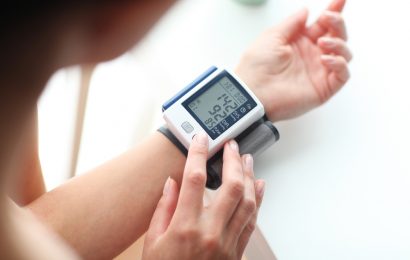One of the most common complications of diabetes is peripheral neuropathy, a type of nerve damage in the arms, legs, hands, and feet. Symptoms include tingling or burning sensations, numbness, insensitivity to pain or temperature, cramps, loss of balance, and excessive sensitivity to touch. It’s often felt in the feet and legs before it’s felt in the hands and arms. It’s been estimated that in the United States almost one-third (28.5%) of adults ages 40 and over with diabetes have some degree of peripheral neuropathy.
Until now, little could be done for the condition outside of maintaining proper blood glucose levels. (A variety of drugs and other therapies may reduce pain associated with neuropathy, but they don’t treat the underlying condition.) However, researchers recently conducted the first study to determine whether the intake of dietary polyunsaturated fatty acids is related to peripheral neuropathy. Using data from the National Health and Nutrition Examination Survey of adults ages 40 and over with diagnosed diabetes, they studied the dietary habits of over 1,000 people who had both diabetes and peripheral neuropathy, looking particularly at the consumption of seven different fatty acids. They found that a higher intake of polyunsaturated fatty acids and of one fatty acid in particular – alpha-linolenic acid, or ALA – was significantly associated with a lower risk of peripheral neuropathy. ALA is structurally similar to a fatty acid called gamma-linolenic acid (GLA), which has been shown in past studies to reduce peripheral neuropathy. Since GLA is not common in the diet, and because of its similarity to ALA, the researchers concluded that ALA was bringing the benefit to subjects in the study.
One of the best sources of ALA is flaxseed oil. Flaxseed oil is not something people commonly get from their daily diet, but it is sold in most health-food stores and may be available in some mainstream grocery stores, as well. Flaxseed oil goes rancid quickly, so it should be stored in an opaque container in the refrigerator and should not be used for cooking. Whole or ground flaxseed, which also contains ALA and additionally provides some fiber, is increasingly available in health-food stores and mainstream grocery stores. (Whole flaxseed must be ground before being eaten; it will not be properly digested otherwise.) Ground flaxseed can be added to cereal, yogurt, smoothies, and other foods with a similar texture. Other common sources of ALA are soybean oil, walnuts, and canola oil (including canola oil margarine).
A high dietary intake of ALA (an omega-3 fatty acid) is also associated with a lower risk of both coronary heart disease and high blood pressure. You should, of course, consult your health-care provider before adding flaxseed oil, flaxseed oil capsules, or ground flaxseed to your daily diet. Ground flaxseed may slow the absorption of oral medicines or other supplements if they are taken at the same time.





